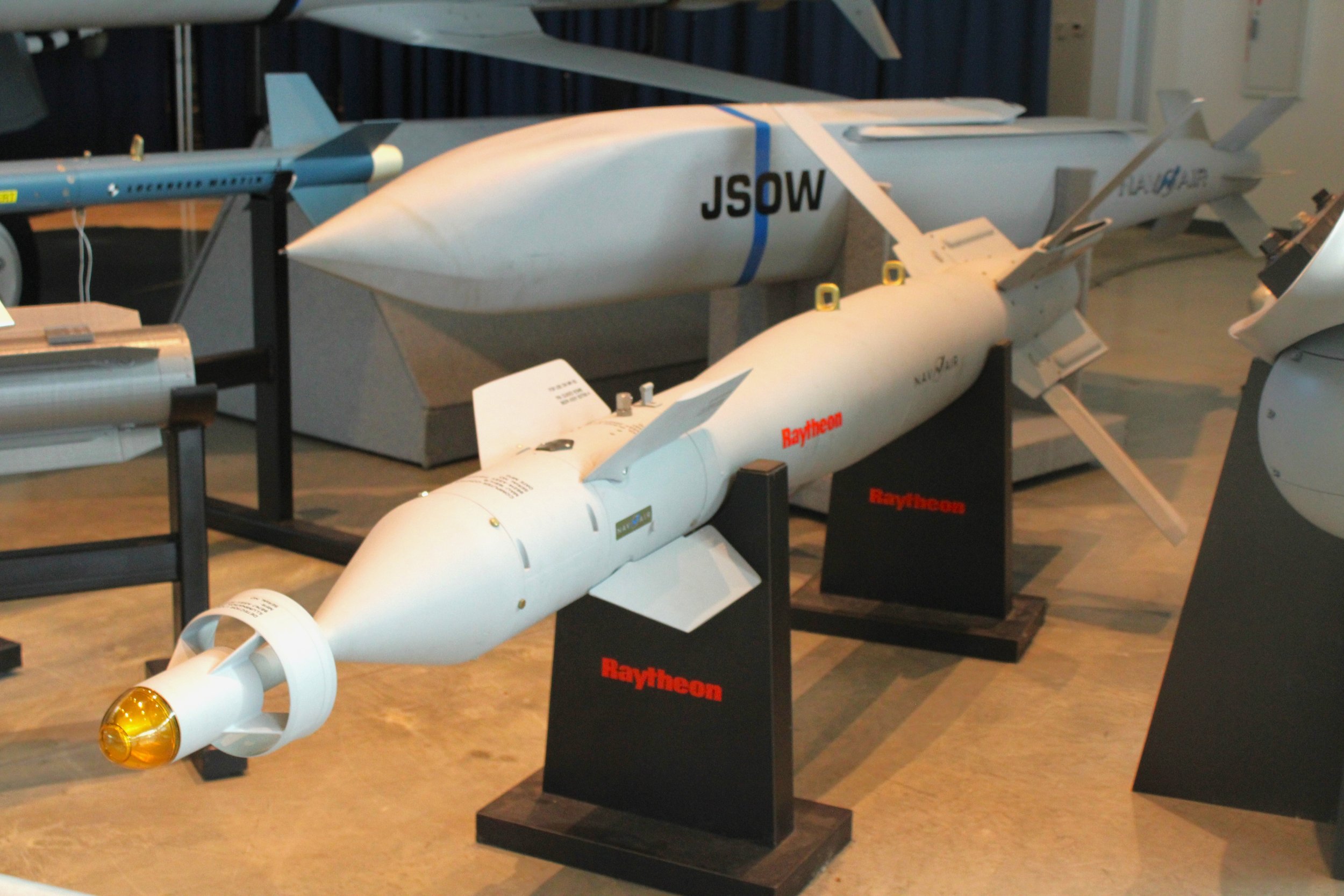
WEAPONS TECHNOLOGY
One of the primary uses of naval aircraft, such as the many examples seen on the PAX Museum Flight Line and inside our display buildings, is to carry and deliver defensive and offensive weaponry for use in protecting our military service people, ships at sea, important US assets, and our economic interests and political goals around the world.
Such technical weaponry includes an extensive array of missiles, guns, electronic warfare and electro-optical assets, ‘smart’ bombs, and other tactical systems including cruise missiles and torpedoes.
Missiles Exhibition
Tomahawk Cruise Missile
This is a long-range, subsonic missile used for deep land attack warfare, launched from US Navy surface ships and United Kingdom Royal Navy submarines.
Its first operational use was in 1991 during Operation Desert Storm by submarines and ships.
This missile uses GPS, terrain matching and digital scene matching to prosecute a target. It can be directed to loiter over an area before being directed to a target.
AGM-88E Anti-Radiation Missile
Cleared for standard operations on F/A-18 Hornets and EA-18G Growlers in 2012. PMA 242 at NAX Patuxent River handles acquisition, development and sustainment.
Suppresses or destroys enemy air defenses. This missile homes in on radar radiation (radio waves). It tracks targets even after operators shut down to evade attack.
AGM-84H Standoff Missile
Is a land attack missile with expanded response. Cleared for use in 2000, its the evolved version of HARM and Harpoon missiles. Compatible with F/A-18 C/D, F/A-18 E/F and P-3C. It uses Teledyne CAE J402-CA-400 Turbojet engine.
Hellfire II AGM-114P2A
Missile color codes are applied to missiles to provide critical safety information to ground personnel.
A dark blue band or a solid blue color over the entire missile or a section of a missile indicates a missile or bomb that is inert. It cannot ignite or detonate.
International orange indicates a weapon or captive store specially instrumented for test purposes.
Raytheon AN/ASQ-228 ATFLIR
ATFLIR stands for Advanced Targeting Forward-Looking Infrared. It locates and laser designates targets day or night.
Flown on all versions of F/A-18 Hornets and Super Hornets. It lets aircraft strike targets far enough away to reduce exposure to enemy defenses. Its sensor optics rotate to maintain focus on target while aircraft is maneuvering.
Key innovation allows it to track targets up to 90 degrees to the side, with smaller control surfaces (fins) allow more ordnance to be carrier versus older models.
Its onboard data link allows fired missile to talk to launching aircraft in flight. The U.S designed Sidewinder air-to-air missile family is used by over 40 countries.
AIM-9X-2 Sidewinder Missile
Bombs Exhibition
Aluminum construction designed to simulate high speed aircraft. Can be used for air-to -air or surface-to-air gunnery and guided missile training.
Its fiberglass nose contains four aluminum corner radar reflectors and lead ballast weight.
Four multi-faceted shapes made with aluminum sheet are in the nose developing a 90% radar signal return. A nose weight helps provide stability.
TDU-34B/A Towed Target
Kit enables a Mk 82 to hit a laser illuminated target and to have accuracy by factor of 10. Was carried by most modern U.S fighter/bomber aircraft. System has been active since 1976.
Laser seeker and winglets kit bold on to Mk 82 bomb to make an “smart bomb”.
GBU-12 Paveway II
Designated to hit moving targets in adverse weather and dusty/smokey conditions. This bomb can track lased targets or track targets selected by pilot during mission. Uses a tri-mode seeker, radar, infra-red imaging and semi-active laser sensors.
With smaller weight and dynamic warhead that is effective against hard/soft targets. Its compact design allows more to be carried by smaller fight-bombers.
Smaller warhead is designed to produce minimal collateral damage. With an standoff range of over 40 miles.
GBU-53B Guided Bomb
Adds inertial guidance and GPS guidance to Mk 82 bomb. Was carried by most modern U.S fighters and bombers. JDAM has been active since 1998. Its max range is 15 NM. Kit increases Mk 82 accuracy by a factor of a 10.
JDAM kit components bolt-on to Mk 82 making guided bomb.























